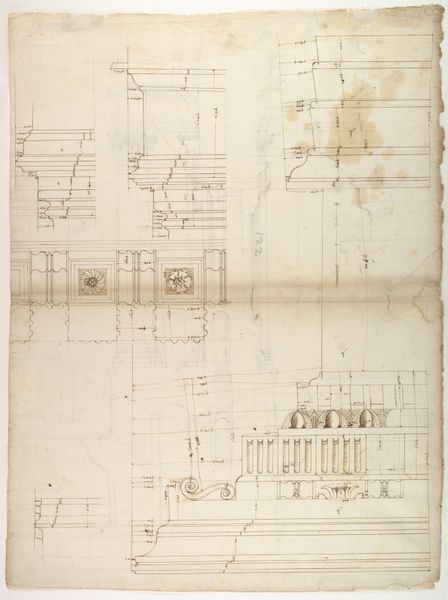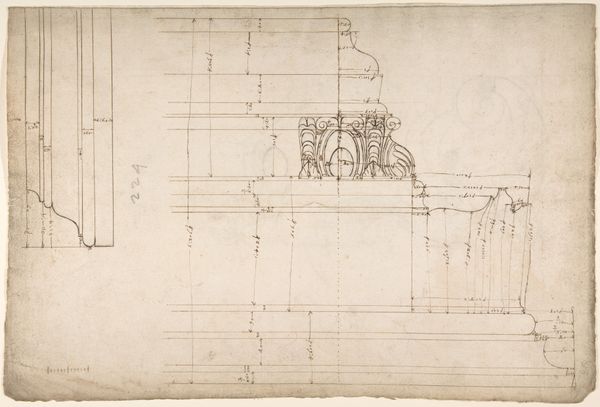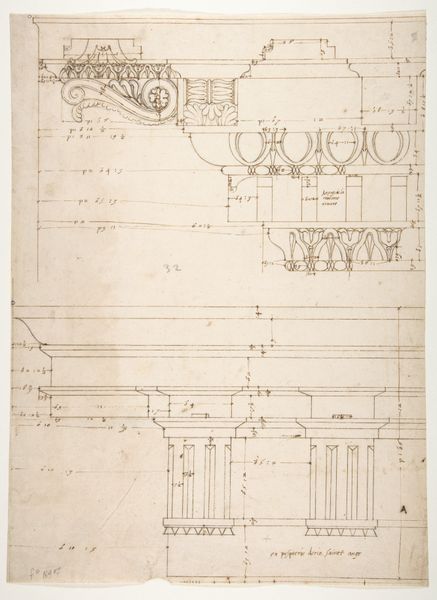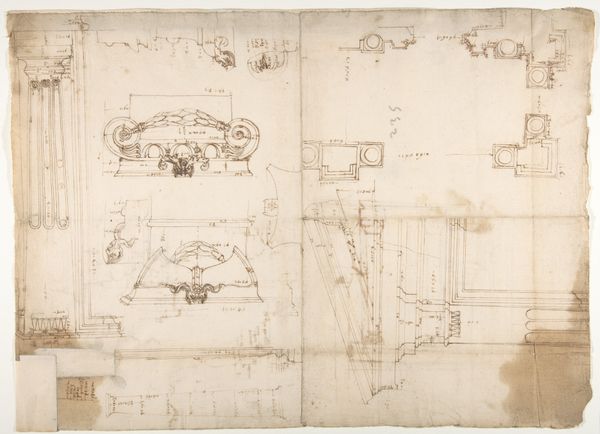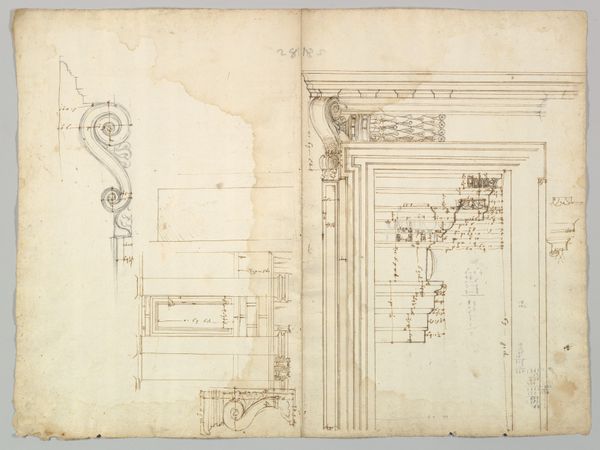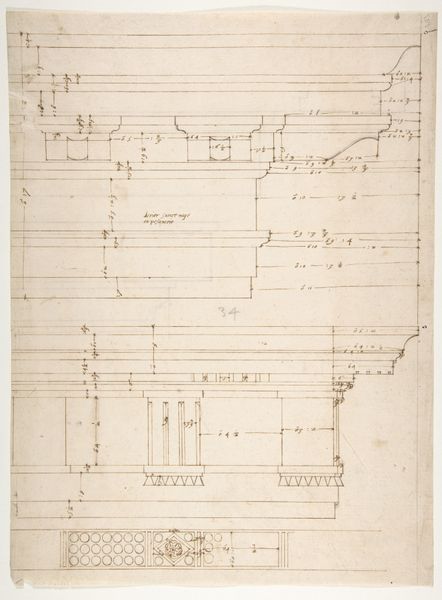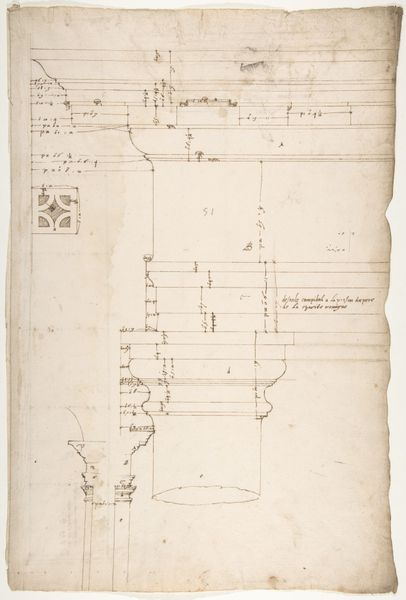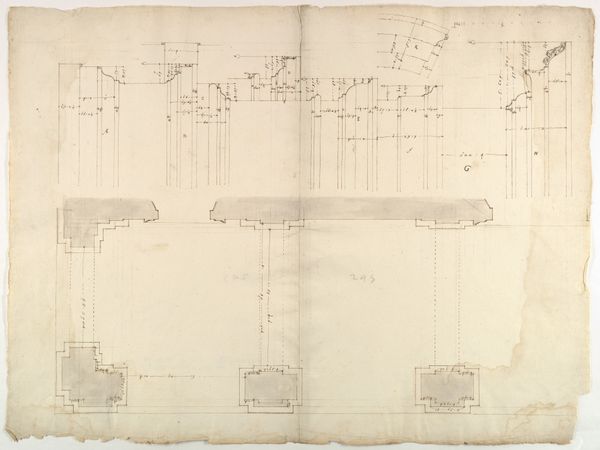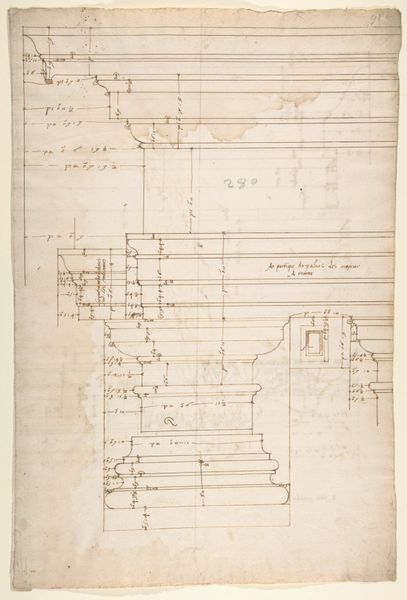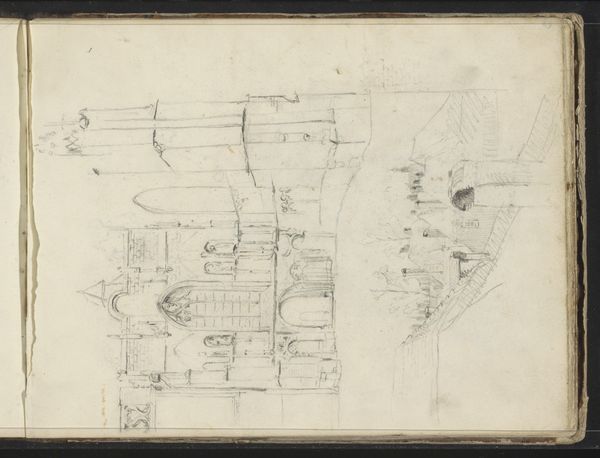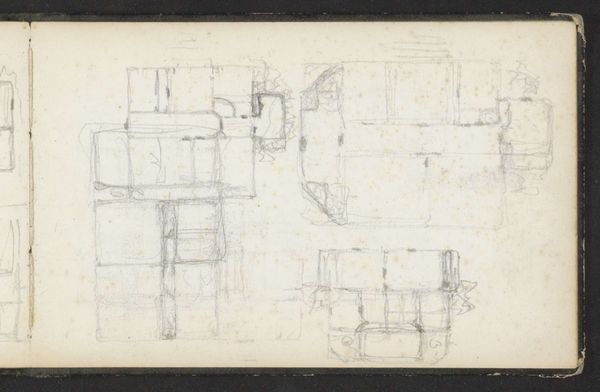
Palazzo dei Conservatori, portico, plan; façade cornice, elevation; minor order, cornice; column, elevation; pedestal, elevation (recto) Palazzo dei Conservatori, portal, elevation; section (verso) 1500 - 1560
0:00
0:00
drawing, print, architecture
#
drawing
# print
#
classical-realism
#
form
#
11_renaissance
#
geometric
#
column
#
geometric-abstraction
#
line
#
architecture
Dimensions: sheet: 17 5/16 x 22 15/16 in. (44 x 58.3 cm)
Copyright: Public Domain
Editor: This is a drawing and print of architectural elements from the Palazzo dei Conservatori, dating from around 1500 to 1560. It’s by an anonymous artist and it details plans, elevations, and sections of the building’s portico, facade, and columns. What’s striking to me is how raw and technical it feels. What can you tell me about this work? Curator: I see a meticulous documentation of architectural elements, reflecting the Renaissance fascination with classical forms, yet its importance extends beyond mere representation. Consider the materials themselves: the paper, the ink, the printing process. Each carries its own social and economic weight. Who had access to these materials? Who was commissioned to produce this print, and for what purpose? Editor: So, it's not just about the architecture, but also about who was involved in creating the image itself and why? Curator: Precisely! The production process – the labor, the skill, the materials – these factors heavily influence how we understand this image and the architecture it represents. For whom was this print intended? An architect? A patron? This would influence the level of detail included and how the information is presented. Consider the cultural value placed on accurate representation and dissemination of classical ideals during the Renaissance. This was an era driven by trade and nascent capitalism. Can this commission be read as commercial transaction between the patron and the artist or printmaker? Editor: It’s fascinating to consider the social context interwoven within these seemingly technical drawings. I hadn't thought about the availability and cost of the materials influencing its creation and dissemination. Curator: Indeed, understanding the conditions of its making reveals the complex networks of power, knowledge, and commerce that shaped the Renaissance. Editor: This perspective really changes how I view architectural drawings. It’s not just about form, but about the means and motives of its production. Thanks for illuminating that. Curator: My pleasure. Remember to look beyond the surface and consider the material reality underpinning every artwork we encounter.
Comments
No comments
Be the first to comment and join the conversation on the ultimate creative platform.
